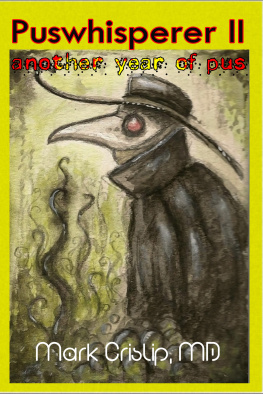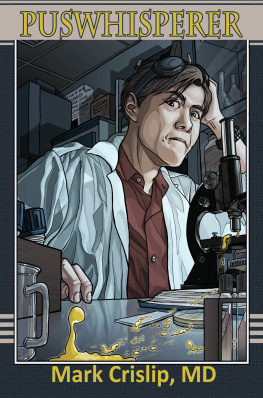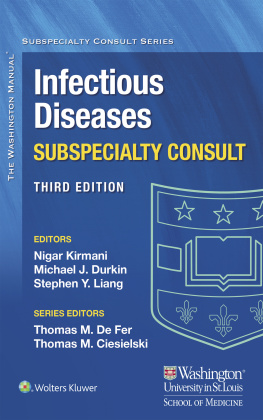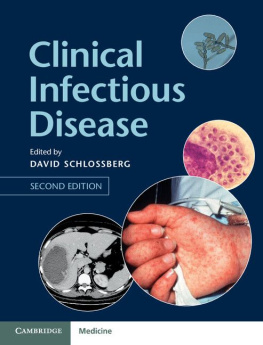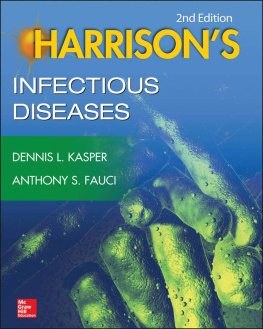Going viral: flu and other viruses
Measles. What is old is new again.
T here was a recent measles outbreak in British Columbia, a couple hundred miles to the north. I assume that, like its failure with Cryptococcus gattii , the border patrol failed to prevent this organism from crossing the border, and I will soon see cases of measles in Portland. I have always wanted to see a real live Koplik spot.
I had assumed I would never see a case of measles, but there has been a marked decline in MMR vaccination in not-so-Great Britain thanks to Dr. Wakefields report in The Lancet linking the MMR vaccine to autism. The study has since been discredited and withdrawn, but not before causing a resurgence of measles and mumps. In honor of Lend-Lease the Brits were kind enough to export both infections to the US. I have seen a case of mumps.
Although no study has found a link between vaccinations and autism (except for one that showed the MMR to be protective), there remains a fear of vaccines, especially in the higher socioeconomic groups. In the 2008 San Diego outbreak
Substantial rates of intentional under vaccination occurred in public charter and private schools, as well as public schools in upper-socioeconomic areas.
Some private schools are an all-you-can-eat smorgasbord of preventable infections in the non-immune, an outbreak waiting to happen.
Measles and mumps are coming back. If you see a case and are asked, Wh ere did measles come from? you might answer Not-so-Great Britain. Or maybe cows.
The thing about infections is, unlike much of modern medicine, they have a history. Much of medicine treats first world problemscomplications of not dying from infections and poor nutrition. Most people in the past did not get to live long enough to get heart disease or glioma or Alzheimers. They got et or died of trauma (getting et is, I suppose, a form of trauma) and they died of infections.
So how long have we had measles, and where did it come from? Modern molecular biology and epidemiology can give hints.
Measles requires a minimum population to persist, so it wasnt until people started gathering into large groups was it possible for measles to become end emic.
MeV (Measl es Virus) infection can confer lifelong immunity, and there is no animal reservoir or evidence of latent or common persistent infection except for subacute sclerosing panencephalitis (SSPE). Therefore, maintenance of MeV in a population requires constant supply of susceptible individuals. If the population is too small to establish continuous transmission, the virus can be eliminated. Mathematical analyses have shown that a nave population of 250,000-500,000 is needed to maintain MeV. This is approximately the population of the earliest urban civilizations in ancient Middle Eastern river valleys around 3000-2500 BCE.
The current strain of measles, using the molecular clock, has only been around for 60 years.
Molecular clock analysis c an estimate the age of ancestors in evolutionary history by phylogenetic patterns. The basic approach to estimating molecular dates is to measure the genetic distance between species and use a calibration rate (the number of genetic changes expected per unit time) to convert the genetic distance to time. Pomeroy et al. showed that Time to the Most Recent Common Ancestor (TMRCA: the age of the sampled genetic diversity) of the current MeV circulating worldwide is recent, i.e., within the last century (around 1943).
The measles virus is related to the Rinderpest virus (RPV) of cattle. It is also related to dolphin and porpoise morbillivirus, canine distemper virus, phocid distemper virus, and peste des petits ruminants virus. It is interesting how these viruses have cousins in other animals. When did measles jump from cows to people? Or do we blame Flipper? Using the molecular clock, it is estimated that
divergence between MeV and RPV occurred around the 11th to 12th centuries.
And ancient records of disease description, always questionable, support measles as a new diseaseeither from a common ancestor that infected cows and people, or jumping from cows to people.
An increasing number of descriptions of measles in the 11th and 12th centuries may reflect the emergence of MeV in human populations at that time. Linguistic evidence suggests that the disease was recognized before the Germanic migrations but after the fragmentation of the Roman Empire, i.e.,between 5th and 7th centuries. This age is still within 95% credible intervals of our results.
This is yet another example of why ID is, and always shall be, the coolest subspecialty in medicine. An d the most dispiriting.
Rationalization
Mrozek-Budzyn, D., Kieltyka, A. & Majewska, R. Lack of association between measles-mumps-rubella vaccination and autism in children: a case-control study. The Pediatric infectious disease journal , 397-400 (2010). http://www.ncbi.nlm.nih.gov/pubmed/19952979
Sugerman, D.E., Barskey, A.E., Delea, M.G., Ortega-Sanchez, I.R., Bi, D., Ralston, K.J., Rota, P.A., Waters-Montijo, K. & Lebaron, C.W. Measles outbreak in a highly vaccinated population, San Diego, 2008: role of the intentionally undervaccinated. Pediatrics , 747-755 (2010). http://www.ncbi.nlm.nih.gov/pubmed/20308208
Furuse, Y., Suzuki, A. & Oshitani, H. Origin of measles virus: divergence from rinderpest virus between the 11th and 12th centuries. Virology journal , 52 (2010). http://www.ncbi.nlm.nih.gov/pubmed/20202190
What is THAT doing THERE?
I received a request from an intern to see a consult today. Whenever I can get away with it, I have the referring doctor give me just a 5 word question. 5 words. Thats all. It saves me having to listen to the history that I am going to take anyway, and I prefer to get the information without the filter of the calling physician.
Few can do it. Why fever? is the shortest I get. I would love a one word question, but no one has provided me with one as of yet. The intern today said, 56-year-old male and I said, Thats five.
I know. What an a-hole.
She laughed and said he has a septic shoulder, what should we do about it.
I thanked her and said I would be all over it like a large, furry dog.
Septic shoulder? Probably going to be Staphylococcus , probably post-operative or IV drug abuser. Thats the typical shoulder infection.
Wrong on all counts. Both the blood and the joint are growing E. coli . No IV drugs, no recent surgery.
So what is THAT doing there?
The last E. coli septic joint I saw was a complication of urosepsis in a patient with advanced rheumatoid arthritis, and that was last century.
E. coli , despite the fact that it is often found in the blood, rarely goes to joints. There are a whopping six cases in PubMed with diabetes, gout, and cirrhosis being underlying causes. This patient has none of the above, but does have underlying liver disease and diverticulosis, so we went looking in the abdomen for a source. Nothing.
Incision and drainage and a long course of IV antibiotics are to come as well.
5 words: What is THAT doing THERE?
Two word answer: No clue.
Sums it up.
POLL RESULTS
Short consult questions?
1. Infected? 18% (7)
2. Fever? 13% (5)
3. Therapy? 8% (3)
4. Insured? 20% (8)
5. Butthead? 38% (15)
6. Other Answers 5%
a. Dying?
b. Fix him, please?
Sore throat
I ts Sunday morning, I am on call and waiting for the ice to melt so I can get in to round. It is one of the reasons I live on a hillit provides me with the occasional legitimate reason to take my time getting into work.
One of the cases I have to see is a young man with a severe sore throat with lymphadenopathy and early abscess formation showing up on CAT scan. The patient is barely out of his teens and has no risk factors for anything odd like tularemia.
Next page
